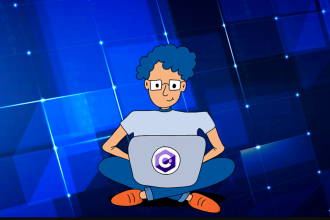Virtual reality is a technology that has transformed the gaming industry. The player can experience complete immersion and interaction with the virtual world. VR games development has been on the rise since the beginning of VR. As a result, the developers have to take into consideration innovative architectural patterns for smooth performance and fantastic gamer experience. As far as the design patterns are concerned, these are the attributes that enhance game stability and ensure interaction so that these games become easy to use and fun to play. For those who want to overcome the major obstacles of VR game development, whether they are beginners or developers, the knowledge of the patterns is the point of the focus for producing high-quality VR games.
Entity-Component-System (ECS) is one of the indispensable design patterns in VR game development. This concept allows appropriate scaling and modularity so that game objects and behaviours can be controlled with maximum efficiency. The difference of ECS from the object-oriented programming is that ECS detaches data and logic, which results in better the performance and maintainability of the software. When ECS method is adhered to by VR game developers, they are able to create mobile environments in which objects move accordingly, with their dynamic interactions offering fun to the user.
One more pattern that is especially important in the game development industry is the Observer pattern. It is responsible for the right flow of the events and smooth transition within the VR environment. The usage of this pattern assists in dealing with the interactive parts, such as player input, environmental changes, and the available in-game events. VR game developers can employ the technology of the Observer pattern to make real-time responsiveness a guarantee consequently allowing for the users to experience a more immersive and reactive game world. Such features as these in VR are absolutely critical. Any little pause can set the user off and ruin the sense of presence.
The State pattern is a key part of the puzzle in managing different states in a VR game, such as moving between menus, gameplay, and cutscenes. This model, which you are using to represent variety-specific behaviors, can make your code simple and easy to maintain. In a VR environment, a State pattern is important for the user to enjoy smooth experiences because it guarantees the transitions are seamless and they don’t feel dizzy when the game shifts between states.
The Obeject Pooling pattern is the most crucial VR game development task. We reuse the objects to make our games as fast as possible instead of creating and destroying them every time. This method is known to cost less memory allocation which withers the drawbacks of slower processing and thus, makes the game much more efficient to run, which is vital in VR to ensure high frame rates. Hence, by using Object pooling, game developers can maintain the frame rate without facing performance hits.
The Singleton pattern is another amazing design pattern which provides a single point of access for managing key game components like rendering, audio and input handling. In the VR gaming industry, when various subsystems are running at the same time, the Singleton design pattern helps keep the same data or memory resources for the entire set and prevents conflicts for resources or memory. The only bad side is that the uses are so many and might disrupt the dependencies, thus developers should find a good balance and stay flexible in their game architecture.
To create engaging and immersive VR experiences, the Command pattern gives a way to systematically manage user action and interaction. This pattern allows game developers to separate input handling from the game logic, providing enough room to customize and extend applications. No matter if you’re working on gesture-based interactions, voice commands, or traditional input methods, the Command pattern technology is the one that can help you design and implement a reliable and flexible control system, thus increasing the player’s experience.
The Flyweight pattern is one of the other indispensable tools VR game optimization can utilize. The common object data melody is the pillar of the technology that allows the storage of the memory to be reduced and the rendering to be efficient. More popularly, this pattern is applied in virtual reality surroundings with a challenging plot or with multiple characters, where the Flyweight pattern stays on the first on the list to be used to render the VR robot without decreasing the quality of its details. This is specially proper for those VR games, which require the use of many complex visualizations and assets.
Finally, the Factory pattern in VR games is instrumental to the whole process as it provides a mechanism to generate game elements. This principle, in fact, helps the developers to write less code and have the simple asset management reducing the clutter just ensuring a structured way to develop the game. The Factory pattern really cleans up the code and speeds up prototyping for virtual reality game developers, which is another route to even more development efficiency.
The VR game developers can use these design patterns within the context of the game to enrich the experience of the players. If you decide to develop your own VR game or you want to find a VR game developer, being familiar with these architectural principles is one of the important points to remember. As a result, the VR community will continue realizing the development of new technology, and that is why confirmed design patterns are necessary for the emergence of interactive entertainment and the delivering of groundbreaking experiences.
FAQs
What programming languages are best for VR development? C# (Unity), C++ (Unreal Engine), and JavaScript (WebVR frameworks) are commonly used.
How much processing power is needed for a VR game? A VR-ready system requires a mid-range GPU (GTX 1660 or better), a modern CPU (Intel i5/Ryzen 5+), and 16GB RAM.
Can design patterns improve VR game performance? Yes, patterns like Object Pooling and Component-Based Architecture optimize memory use and ensure stable frame rates.
How can motion sickness be reduced in VR games? Using smooth locomotion, teleportation, comfort vignettes, and maintaining high frame rates helps minimize discomfort.
How do you ensure cross-platform compatibility in VR games? Using platform-agnostic design patterns and abstraction layers allows for adaptability across different VR headsets and controllers.
For those seeking to hire virtual reality developer, implementing these architectural strategies ensures an immersive and high-performing VR project.














